Supporting materials
Design for swimming: the secrets of shark skin (Word)
Design for swimming: the secrets of shark skin (Pdf)
Download
Download this article as a PDF

Shark skin is adapted for energy-efficient swimming in remarkable ways, some of which are now being copied by designers and engineers.
Sharks have an image problem: throughout the world, they are portrayed as bloodthirsty monsters – most famously in the movie ‘Jaws’. Fear of sharks is common, especially in coastal areas where ideal surfing and swimming conditions occur alongside resident sharks. In such situations, the white undersides of surfboards and constantly moving limbs can easily provoke these animals – with potentially tragic consequences.
In fact, shark attacks are relatively rare, and many species of shark are now themselves in need of protection from human activities, especially fishing. Far from being just movie monsters, sharks form an important and diverse group of cartilaginous fish, comprising some 360 species within 30 families in eight taxonomic orders. Research on sharks has revealed just how well adapted they are: in particular, their skin has remarkable features that help sharks to swim in an especially energy-efficient manner. These features have been taken up in various areas of technology, from swimsuits to aeroplanes.
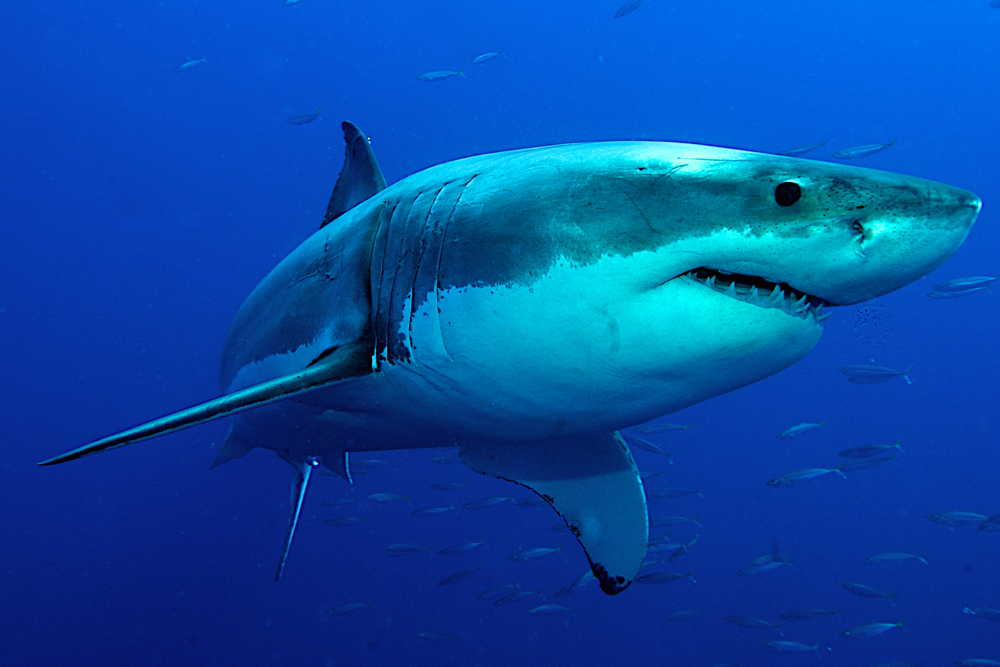
So how are sharks adapted to their lifestyle? The most obvious feature (which they share with other fish) is their streamlined body, which allows them to swim very fast with minimal energy. In the supplementary worksheetw1, we provide instructions for a simple experiment to explore how shape affects the force needed to move through water. In the experiment, which is suitable for secondary schools, the students make shapes, including cubes, cuboids, spheres and cylinders – plus a shark shape – out of identical masses of modelling clay and carry out a speed trial, comparing how long it takes each clay shape to fall to the bottom of a tall, water-filled cylinder.
Of course, an animal’s locomotion through water is influenced not only by its shape, but also by how the water flows over its surface – just as competitive swimmers like their skin and swimwear to be as smooth as possible. If you were to stroke shark skin, you would notice that it feels smooth in one direction only; in the opposite direction, it feels very rough – as if you were to run your fingers along a pine cone from the tip downwards, rather than the base upwards. This difference in texture is because most shark species have fine, tooth-shaped scales covering their surface. These ‘placoid’ scales provide protection against parasites and injuries. In addition, researchers have found connections between the exact shape of these scales and the lifestyle of different shark species.
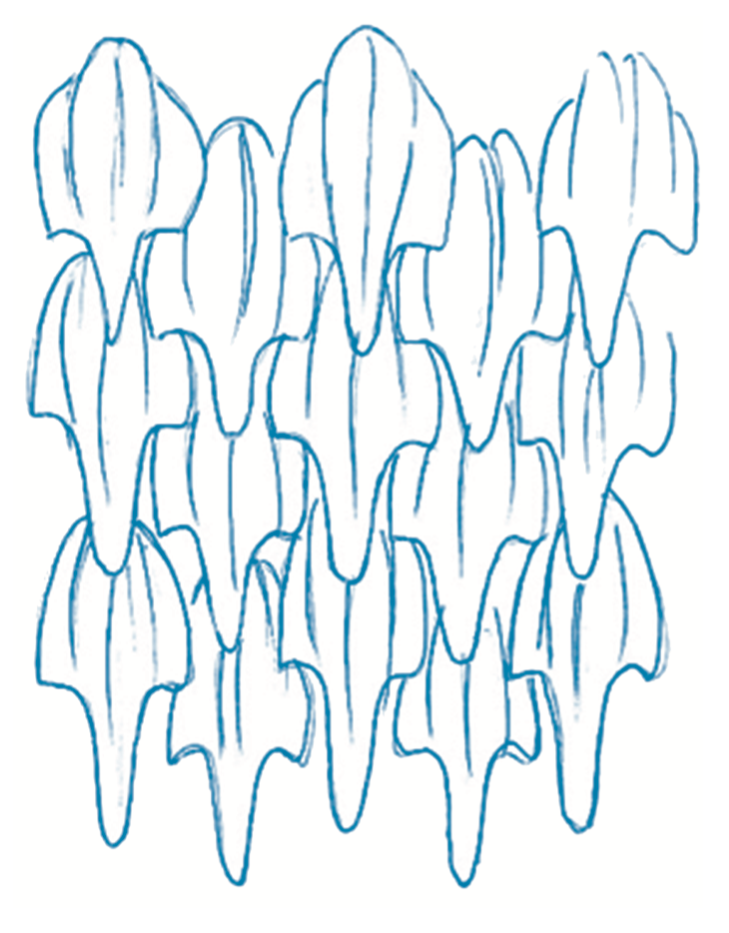
For example, sharks living near reefs (such as gulper sharks, Centrophoridae) have smooth scales, as these best protect them against mechanical abrasion by rocks. This is not the case for fast-swimming hunting sharks, such as the great white shark (Carcharodon carcharias), silky shark (Cacharhinus falciformis) and hammerhead sharks (Sphyrnidae). The scales of these species have a striking additional feature: fine, raised ridges or ‘riblets’ along the length of the scale. These riblets are aligned to form tiny ridges that run longitudinally along the shark’s body. Although the riblets are only a few micrometres high, experiments have shown that they reduce drag as the shark swims, allowing it to swim faster using the same amount of energy. In contrast, sharks that swim slowly – for example, cat sharks (Scyliorhinidae) – have fewer riblets on their long, pointy scales. Below you can see some magnified images of the scales of different shark species, showing their varying shape and riblet form.
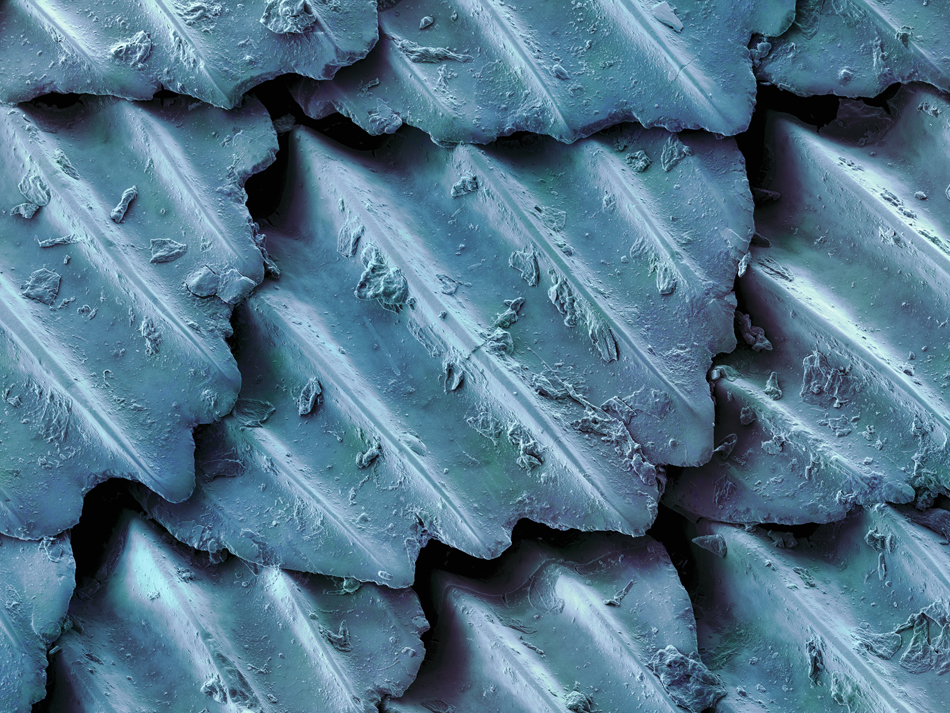
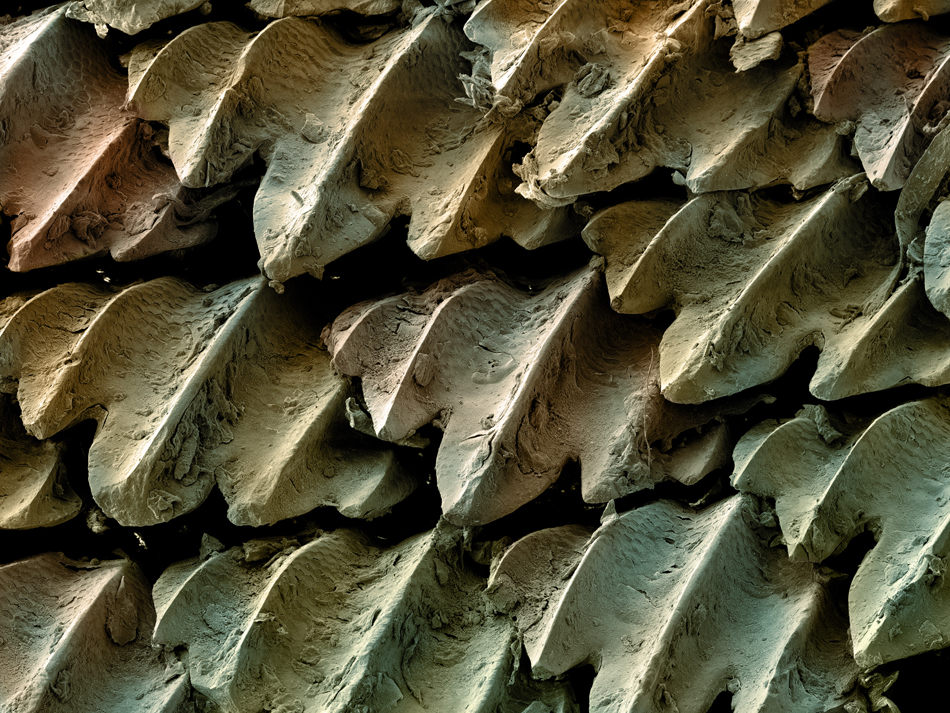
So how do shark scales and riblets work? To find out, we need to look more closely at the laws of fluid dynamics.
There are two different forms of dynamic flows: laminar and turbulent. In laminar flow, the fluid moves in one direction only; the particles of the fluid may move at different speeds in different layers, but the layers do not mix. In turbulent flow, however, there are fluctuating flows against or across the main flow direction, which cause swirls in the layers. Here, fluid particles are constantly changing their position and speed, which consumes energy.
When a fish (or a ship) moves in water – or an aeroplane flies in air – the moving body is surrounded by a fluid medium. Due to friction, fluid particles that are in contact with the surface of the body move at zero speed relative to that body, while further away, the fluid flows smoothly around the body. In between is the turbulent boundary layer, where the resistance to the movement occurs.
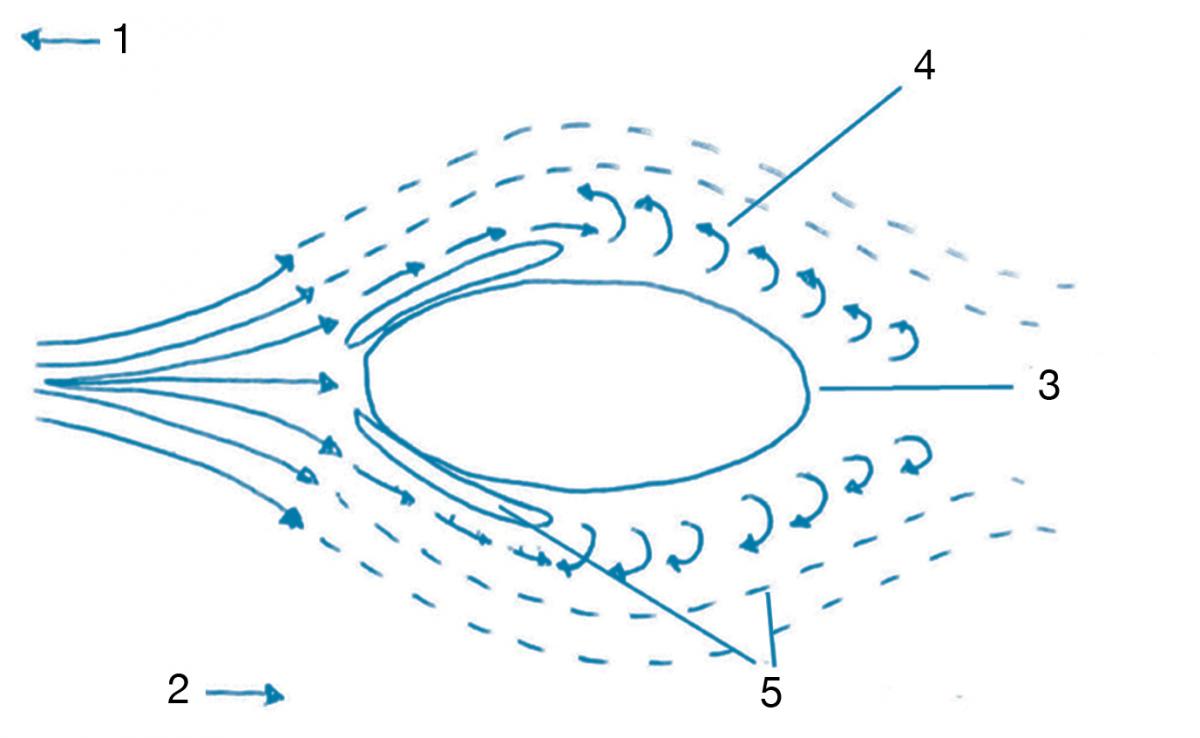
Linear ridges like the shark’s riblets reduce this resistance by changing the flow in the boundary layer. This is because, deep within the valleys between the riblets, the flow velocity is low, so there is less friction. However, high-velocity vortices form at the tip of these riblets; but because the surface area of these tips is low compared to the surface of the whole animal, the total friction is reduced (Dean & Bhusan, 2010). The optimal spacing of the riblets depends the velocity of movement, so in sharks it varies between species.
Such discoveries about shark skin have attracted the interest of engineers and technologists as well as biologists – an example of potential ‘biomimetic’ applications, where biological features have found a use in technical applications.
Often, biomimetics is a top-down process. For example, to solve an environmental problem, we can search for an analogy in nature to help find a solution – such as the development of pyrethroid insecticides, which were inspired by the naturally occurring plant-based insecticide pyrethrum. On the other hand, in a bottom up-process, biological systems are analysed to identify procedures or constructions that may have some useful technological application. The discovery of shark scale riblets is such a case, and these are now being used as an inspiration for other surfaces that move through fluids, as the following examples illustrate.
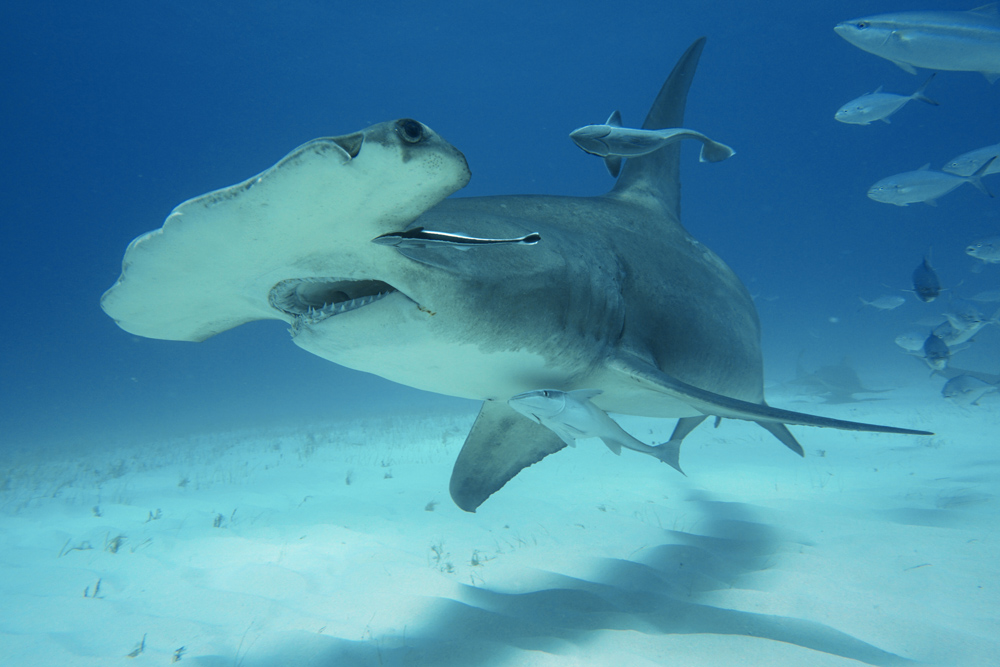
As far back as 1989, the aircraft manufacturer Airbus carried out a riblet experiment. They covered 70–80% of an Airbus A380 with metallic riblet foil, with the riblets in the form of sharply pointed triangles. Tests showed that the foil reduced friction by up to 8%, equivalent to a fuel saving of 1–2% under real-world conditions, which would allow a long-distance A380 flight to carry an additional 4 tonnes of payload. More recently, a polymer version has been developed, whereby a coating is applied to a surface and the riblet microstructure is impressed onto it, then hardened. This version has the advantage of being easier to apply to curved surfaces.
Ship hulls lying below water acquire layers of biological growth from barnacles, algae and other materials. This accretion causes increased drag and thus additional fuel costs for shipping. Research has shown that creating an uneven surface like the riblet scales on a shark’s skin is a huge help, as it both reduces the amount of growth over a year by some 60% and makes cleaning off the growth easier (while avoiding the environmentally damaging effects of some antifouling agents). Similarly to aircraft, riblet surfaces on ships can reduce drag in water by up to 10% (Fu et al., 2017).
Finally, and most controversially, some Olympic swimmers have chosen to wear full-body swimsuits made from a riblet-effect material – and have then won gold medals. Although the extent to which the riblet effect contributed to these triumphs is still a controversial issue, full-body swimsuits were banned from competition in 2010. So, while the riblet scales have given sharks an evolutionary advantage, applying this advantage to the world of competitive swimming is a more questionable issue.
The editors would like to thank Dr Katharina Sonnen for her advice on the article.
This article makes links between two separate disciplines: hydrodynamics (physics) and biology. The morphological characteristics of sharks are described in relation to fluid dynamics, which allows readers to understand how these different phenomena are connected.
The article also features examples from engineering, where the development of new structures is inspired by biological adaptations.
Bartolome Piza Mir, science and mathematics teacher, Spain